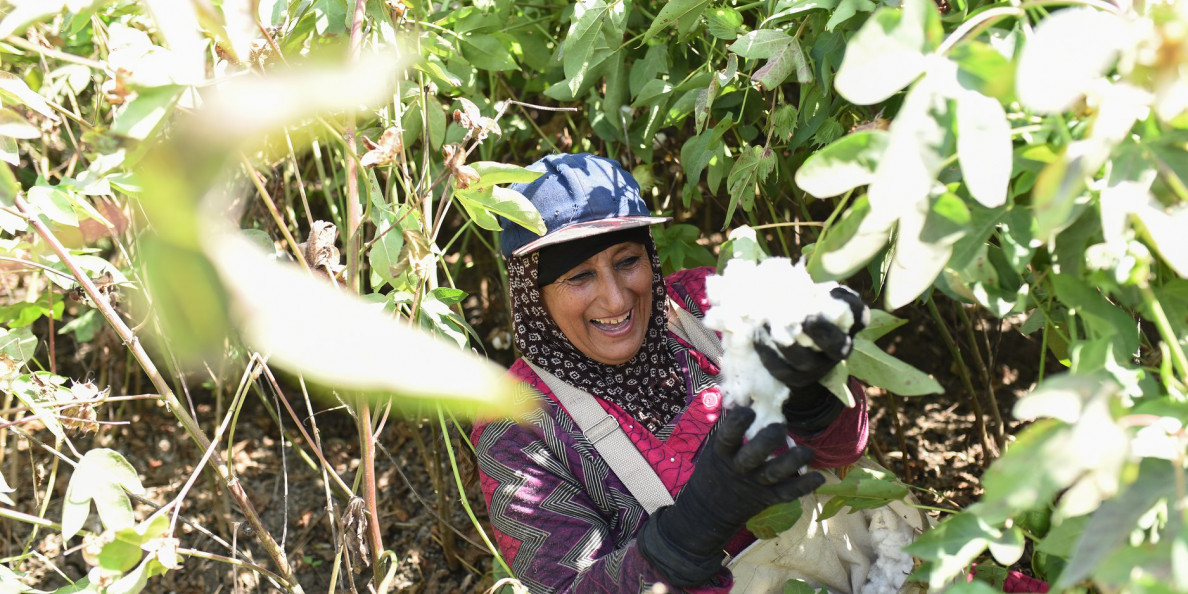Next year’s cotton harvest could drop by 30 per cent, according to a recent report, writes Niveen Wahish
Egypt’s cotton cultivation is now in progress, having begun in mid-March and continuing until June in some areas. However, judging by the areas planned for cultivation, the US Department of Agriculture’s Foreign Agricultural Service Report is forecasting a smaller crop in 2020.
One of the main reasons for the decrease, according to the report, is the low price at which last season’s crop was sold.
“Farmers and industry are expected to decrease production to raise cotton prices,” it says. A high harvest in 2019 caused supply to outstrip demand, pushing down prices to LE2,050 ($117) per quintar ($567 per bale) in March 2019, the report said.
One quintar is 50kg of lint cotton. One bale is 4.8 quintars.
The report estimates that the harvested area of cotton in Egypt will drop by around 30 per cent to 97,000 hectares, down from 141,000 hectares last year. This will affect the harvest, causing it to drop from 489,000 to 337,000 bales, it says.
“High carryover from the previous season decreased prices and discouraged farmers from planting cotton in 2019,” the report says. The high carryover was due to high production in the previous season.
The large harvest is attributed to the expansion of cultivated areas from 55,000 hectares in 2016-17 to 141,000 hectares last year. It was also the result of higher yields because of improved cottonseed varieties.
These produced an extra two quintar of cotton per feddan, the report said. Good weather, delayed cultivation, and improved pest control also helped to boost yields.
In 2018/2019, production increased by 63 per cent over quantities produced in the previous year and 190 per cent above 2016/17 production, the report shows.
Farmers had expanded cotton cultivation last season encouraged by the high indicative prices announced by the government and because of restrictions on planting rice to ration water use.
Egypt specialises in producing long-staple and extra-long staple (ELS) cotton, the latter used in producing fine quality cotton products. Only three per cent of total world cotton production is ELS cotton. Egypt, the US, Israel, and Turkmenistan are the only countries producing ELS, according to the report.
To protect the quality of Egyptian cotton, the government applies strict rules. Every year, two months before the onset of the planting season, the minister of agriculture issues a decree identifying the cotton varieties allowed for each region. Each variety must only be grown in the specified areas.
The government has also taken further steps to improve the quality of Egyptian cotton. According to the report, in early 2017 it announced a 19-step plan to reverse the cotton industry’s decline, notably by taking over the production and distribution of cottonseed, which used to be handled by the private sector.
“The government was forced to intervene as Egyptian cotton’s reputation and quality had deteriorated significantly, due to the seed companies’ lack of effective quality-assurance systems that resulted in inferior, mixed variety output,” the report said.
These efforts are paying off, according to the report. “The quality and physical properties of the 2018/19 cotton harvest improved significantly and are expected to improve again in 2019/20,” it said.
There has been increased demand for Egyptian cotton in local and international markets, and this is expected to continue in 2019/20.
To ensure purity and prevent mixed variety output, the government is against the cultivation of short- or medium-staple strains in the traditional cotton-cultivation areas of the Delta and Upper Egypt, and it is initiating a research project in Shark Al-Owainat in the New Valley governorate to cultivate trials of medium and short-staple upland cotton, the report said.
The government “chose the area due to its remoteness and isolation from existing cotton cultivation, in order to prevent seed mixing,” it said.
Egyptian yarn manufacturers prefer medium- and short-staple cotton because it is often cheaper. Yarn producers can use Egyptian long-staple cotton instead of imported short- and medium-staple cotton if the prices of local cotton are more competitive than those for imported cotton, the report said.
The government announces an indicative price before the cultivation season commences, though this is not a commitment to buy the crop.
While the indicative price for long-staple strains ranged between LE2,700 ($154) to LE2,800 ($160) per quintar, the crop sold for around 18 per cent lower when it was harvested and farmers began to market their produce, the report said. In February this year prices dropped further to as low as LE2,050 ($117).
This was partly because stocks in February 2019 were 150 per cent more than the previous season. “The surplus supply added significant pressure on prices, with indications that it was now being sold at cost,” the report said, adding that this experience would likely push farmers to reduce their cotton production.
The lower harvest next year will likely effect imports and exports. According to the Report, imports will increase by two per cent to 510,000 bales, while exports are forecast to decrease by 24 per cent to 220,000 bales.
The increased imports are attributed to an expansion in domestic processing capacity.
*A version of this article appears in print in the 2 May, 2019 edition of Al-Ahram Weekly under the headline: Balancing the cotton market
Πηγή: ahram.org.eg

